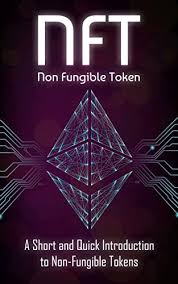Eps 1564: Introduction to Non Fungible Token
— The too lazy to register an account podcast
| Host image: | StyleGAN neural net |
|---|---|
| Content creation: | GPT-3.5, |
Host

Leon Knight
Podcast Content
When you represent a real-world or digital asset in a blockchain as non-fungible tokens, ultimately, you are benefiting from blockchains immutable, transparent, and secure characteristics. If tokenized assets are non-fungible, the ownership of those assets is fully tracked and transparent, even when selling just the tokens representing part of the property. When buying NFTs, what you are really buying is tokens representing the ownership of a digital asset. Imagine buying digital artwork online for a fair price, and getting a unique digital token known as the NFT, that demonstrates your authority over the art piece you purchased.
NFTs could be used to create artificial scarcity for digital art works, making just one NFT of this piece, with a unique signature. Although the artist may be selling an NFT representing a piece, the artist may still retain the copyright of that piece and create multiple NFTs of that same piece. The artist may be selling the NFT, while the purchaser may view the digital artwork on his/her computer or telephone. NFTs can be used to commodify digital works, such as digital artwork, video game objects, and music files.
Because NFTs have value that is determined mostly by the market and demand, they can be bought and sold like other physical types of artwork. They really could be used to represent the ownership of any kind of unique resource, much like the title of an object, either digitally or physically. NFTs can have only one official owner at any given time, and are secured on the Ethereum Blockchain: nobody can alter ownership records, or copy/paste new NFTs into existence. Users must also have a cryptocurrency wallet that is compatible with the blockchain network where the NFT was created.
Like digital asset wallets, NFT markets operate on a custody or non-custodial structure. Some marketplaces, such as Foundation and SuperRare, clarify what rights users get when buying NFTs on their platforms; typically, they stipulate that holders of an NFT do not own the creation itself. In theory, NFTs are all about something that is unique that requires proven ownership. Physical assets such as properties can be tokenized to allow for fractional, or shared, ownership.
As we see more tokenization of assets, NFTs representing property or financial assets may be more and more attractive to use in this use case. With valuable assets such as cars and properties represented in Ethereum, it is possible to use NFTs as collateral for a decentralized loan. Since NFTs are basically a deed, you might someday be able to use Ethereum to purchase a car or house, and get a deed back in the form of NFTs in exchange . In simplest terms, NFTs turn digital works of art and other collectibles into unique, verifiable assets, easily traded across blockchains.
In short, NFTs are unique digital assets created, stored, and transferred over a blockchain network, with the property and transaction history recorded and verified in the blockchain of that network . The token portion of NFT means that, similar to other digital assets like Bitcoin, Ether, Ethereum network tokens , and other cryptocurrency tokens, an NFT is basically a digital code containing some information, which is created, stored, and transferred on the blockchain network. Unlike cryptocurrency, NFTs are described as being non-fungible, in the sense that they are unique and cannot be replaced or traded with others of its type. Non-fungible tokens are not traded on standard cryptocurrency exchanges, but rather are bought or sold in digital markets such as Openbazaar or in Decentralands LAND marketplace, the virtual world.
A non-fungible token is a unit of data stored in the blockchain that may represent a digital object that is unique, such as artwork. Technically speaking, the NFTs existing in the Ethereum network, for instance, are traditionally ERC-721 tokens.2 Like all other cryptoassets, the token portion of an NFT cannot be copied or forged, and it can exist only at one particular location on a blockchain at a given time. Conceptually, the ERC-721 tokens, or other tokens of a blockchain network, underpinning an NFT, could be designed with smart contract features to block NFTs from being transferred from one party to another, unless and until the NFTs rights-holders in an NFT, are paid for by paying the cryptocurrency fees for NFTs. As blockchain technology improves further, certain NFTs could potentially incorporate the underlying digital assets themselves, potentially preventing digital content copying and counterfeiting.
While digital files like artwork are infinitely re-playable by themselves, NFTs representing them are tracked in their underlying blockchains and give buyers proof of ownership. The immutable nature of the NFT is the key to its success as a trusted form of authenticating original works in the digital world, where anyone can create, share, download, and replicate a piece of digital content . The unique identification codes and associated metadata embedded into the NFT upon creation are immutable and auditable, just like blockchains transaction histories and record ownership are immutable and public, accessible by anyone to review and audit.
